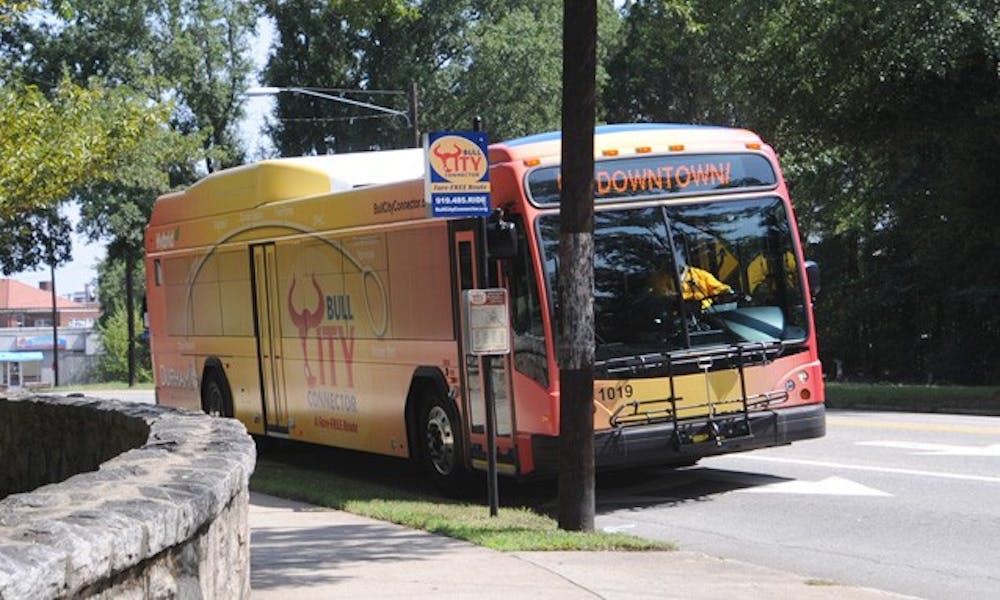Duke students, employees and faculty members have joined Durham residents in taking advantage of the new, brightly-colored buses that connect the University to the Bull City.
On Aug. 16, the Bull City Connector hit the road and began its route from Duke’s West Campus to downtown Durham. Phail Wynn, vice president for Durham and regional affairs, said the bus has been popular with local Durham residents and employees thus far, though the daily number of riders has not yet reached the targeted goal for the year. Students do not yet represent a significant portion of the ridership.
“So far everything has been positive. There are about 1,200 riders per day, and I’m not even sure that all the students are aware of it yet,” he said. “We were hoping to have a daily ridership of 2,000 by the end of the year, and right now we’re about 60 percent there.”
Wynn said he will meet with Durham City Manager Tom Bonfield after the bus has run for 90 days to discuss potential changes to its schedule and stop locations. Depending on ridership patterns and passenger feedback, the bus may depart from Foulton St. instead of Trent Dr. Wynn said such a change would make the route more convenient for employees.
Director of Community Engagement Sam Miglarese said he was excited by the potential influence the Connector could have on students and their relationship with Durham.
“[This] is another great example of moving the needle to build better Duke-Durham relations, one rider at a time,” Miglarese wrote in an e-mail. “Seeing the BCC go up and down Main Street is such a visible example of bringing Duke to Durham and Durham to Duke.”
Miglarese added that he hopes the bus will allow student groups, such as Greek organizations, to make better use of the community service opportunities in the area.
“[The bus] is especially positive for students who want to work in service,” he said. “You have to know that one of the biggest challenges that Duke faces is fulfilling the desire for students to serve. If Duke is going to build a culture of service, it has to provide the infrastructure to do that.”
For the residents of Old West Durham neighborhoods, the bus is the result of a project they have been encouraging for years. According to John Schelp, president of the Old West Durham neighborhoods, the residents were among the first to endorse the idea of the Connector.
“Old West Durham was one of the first neighborhoods to promote and come up with a connector based on the old East/West streetcar line,” he said. “We spoke at Preservation Durham luncheons and talked to reporters about the importance of an East/West connector between the largest employer in Durham and downtown and beyond.”
Aaron Lubeck, an instructor at the Nicholas School of the Environment, said the bus is particularly convenient because of the location of the bus stops in relation to his house.
“I was a total skeptic at first, but I’m pretty happy with [the Connector],” he said. “Depending on the weather, I would probably have had to bike, but this seems to be the best option—of course, it helps living two blocks away from the bus stop!”
Get The Chronicle straight to your inbox
Signup for our weekly newsletter. Cancel at any time.

